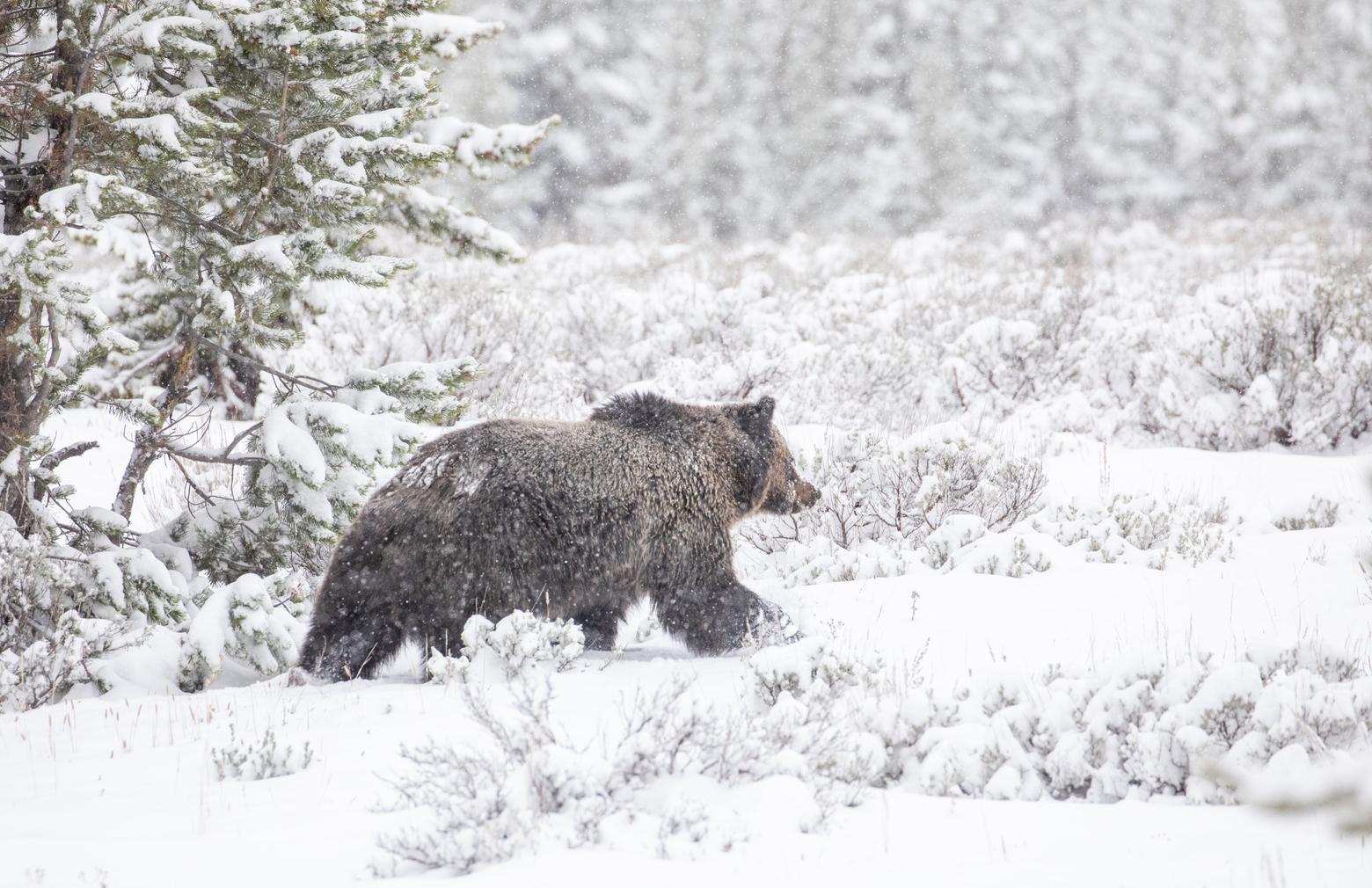Back to StoriesWake-Up Time: First Grizzly Of 2023 Spotted In Yellowstone
March 7, 2023
Wake-Up Time: First Grizzly Of 2023 Spotted In YellowstoneBears are coming of their dens in Greater Yellowstone and given the tough winter we've had there are a lot of carcasses awaiting them. Be aware and be careful
by Mountain Journal
Winter slumber over, grizzlies in Greater Yellowstone are now emerging from hibernation. Beware. On March 7, Yellowstone officials said a field biologist conducting a radio telemetry overflight spotted the first grizzly of the year in the park.
The adult bear, estimated at 300-350 pounds, was seen near the remains of a bison carcass in Pelican Valley, in the central-eastern part of the park. Officials say the first bear sighting of 2022 also occurred on March 7.
Male grizzlies come out of hibernation in early March. Females with cubs emerge in April and early May. When bears emerge from hibernation, they look for food and often feed on elk and bison that died over the winter. Sometimes, bears will react aggressively to encounters with people when feeding on carcasses.
All of Yellowstone and Grand Teton parks are bear country—from the deepest backcountry to the boardwalks around Old Faithful. It extends to Forest Service and BLM lands, too, as well as the river valleys.
Park officials advise that visitors follow these guidelines:
Stay alert and always be ready for a bear encounter. Given the tough winter we've had there are going to be a lot of ungulate carcasses out there.
Carry bear spray, know how to use it, and make sure it’s accessible.
Hike or ski in groups of three or more, stay on maintained trails, and make noise. Avoid hiking at dusk, dawn, or at night.
Do not run if you encounter a bear.
Stay 100 yards (91 m) away from black and grizzly bears. Approaching bears within 100 yards is prohibited. Use binoculars, a telescope, or telephoto lens to get a closer look.
Store food, garbage, barbecue grills, and other attractants in hard-sided vehicles or bear-proof food storage boxes.
Report bear sightings and encounters to a park ranger immediately.
“Spring visitors skiing, snowshoeing, or hiking in Yellowstone National Park are reminded to carry bear spray and be especially alert for bears near carcasses and areas with early spring green-up," says Kerry Gunther, Yellowstone's senior bear management specialist. "These are the first foods sought out by grizzlies after emerging from hibernations."


